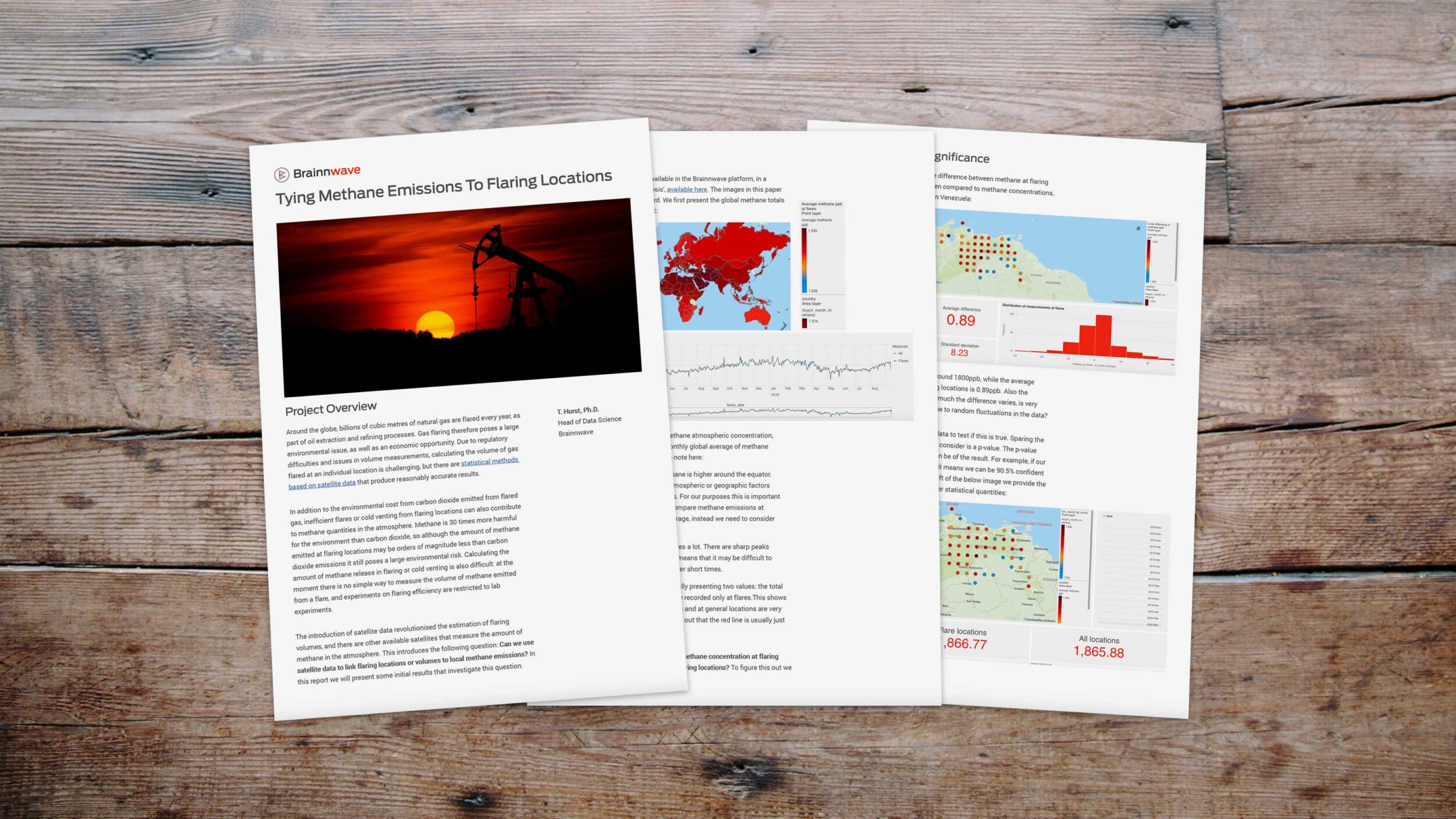This website uses cookies so that we can provide you with the best user experience possible. Cookie information is stored in your browser and performs functions such as recognising you when you return to our website and helping our team to understand which sections of the website you find most interesting and useful.
White Paper: Tying Methane Emissions to Flaring Locations
Estimated reading time: 0 minutes, 58 seconds

As part of the drilling and refining process in the oil and gas industry, volatile or unused gas is burned off in a process called flaring. As a result, billions of cubic metres of natural gas are flared every year globally. There is now a global push to eliminate all routing flaring by 2030, but getting reliable estimates of the volume of gas flared can be challenging: there is a danger that flaring is unreported, or that reported values are unreliable.
In addition to the environmental issues related to flaring volumes, there are also concerns over the efficiency of gas flares, or locations where gas is cold vented. In these cases methane and other natural gases are released directly into the atmosphere. Although the volume of methane released is generally a lot smaller than the volume of gas flared, methane has a global warming potential of up to 30 times that of carbon dioxide, so still poses a large environmental risk.
In a recent project we analysed satellite data to understand how concentrations of methane in the atmosphere are linked to gas flaring sites and volumes.

